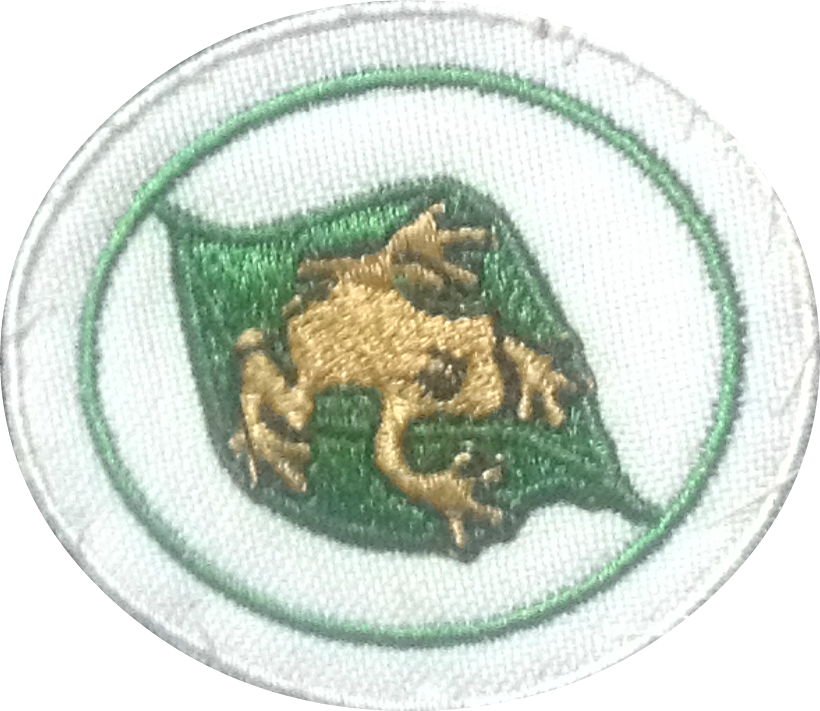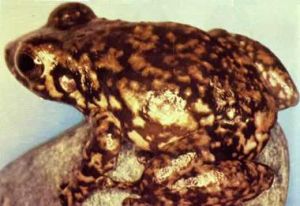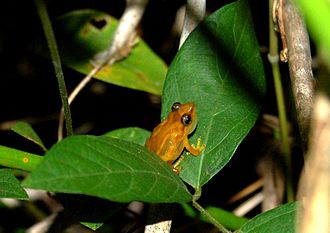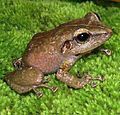AY Honor Coquí Answer Key
1
2
Frogs and toads.
3
Frogs are mentioned in the Bible, more famously as one of the 10 plagues against the Egyptians, found in Exodus chapter 8. They are also mentioned in Psalms 78:45, 105:30; and Revelation 16:13.
4
They are cold-blooded; their skin is not covered with anything; they are soft and moist (with the exception of Caecilian, which have small scales); they have an aquatic larval stage of development; the young generally undergo metamorphosis from larva with gills to an adult air-breathing form with lungs; they use their skin as a secondary respiratory surface.
5
An absence of an inter-digital membrane (which means they're not adapted to swimming); the last toe ends in a T shape; it has terrestrial reproduction and direct development, which means they have no tadpole stage, they hatch from eggs as fully formed small frogs.
6
The species is named for the loud call the males make at night.
7
Different coquí make different types of sounds, such as:
"Churi- ki – ki – ki", Red-eyed coquí (Eleutherodactylus antillensis), locally known as coquí churí
"Tic – tic – tic", Grass coquí (Eleutherodactylus brittoni)
"Clicks – clicks", Eneida's coquí (Eleutherodactylus eneidae)
Prolonged and fine whistle, Whistling coquí
A low "chip – chip", Bronze coquí, or Richmond's coquí, (Eleutherodactylus richmondi)
Waterdrops falling, Mona coquí (Eleutherodactylus monensis)
"Tuit – tuit – tuit", Golden coquí (Eleutherodactylus jasperi)
8
This sound serves two purposes; "CO" serves to repel males and establish territory, while the "KEE" serves to attract females.
9
The genus is called Eleutherodactylus; there are several, several species that belong to this genus. Here are just a few examples:
Red-eyed coquí (Eleutherodactylus antillensis)
Dwarf coquí (Eleutherodactylus unicolor)
Spotted chirping frog (Eleutherodactylus guttilatus)
Lesser Antillean whistling frog (Eleutherodactylus johnstonei)
10
Colombia, Cuba, Guatemala, Dominican Republic, US Virgin Islands, UK Virgin Islands
11
11a
The web-footed coquí (Eleutherodactylus karlschmidti) (also known as Karl's robber frog).
11b
11c
Common coquí (Eleutherodactylus coqui)
Puerto Rican rock frog, locally known as the coquí guajón (Eleutherodactylus cooki)
Mountain coquí (also known as upland coquí, Puerto Rican robber frog), (Eleutherodactylus portoricensis)
Melodious coquí (Eleutherodactylus wightmanae)
11d
The Mona coquí (Eleutherodactylus monensis)
11e
The Dwarf coquí.
(at 0:14 seconds)
11f
The web-footed coquí (Eleutherodactylus karlschmidti) (also known as Karl's robber frog)
11g
12
The coquí is considered a plague on the islands of Hawaii. They were brought over by boats that were unloading ornamental plants from Puerto Rico.
13
Eneida's coquí (Eleutherodactylus eneidae), golden coquí (Eleutherodactylus jasperi), and the web-footed coquí (Eleutherodactylus karlschmidti)
14
It is our imperative to help protect and conserve the Puerto Rican coquí for the following reasons:
- Aesthetic: its habitats make up an incalculable and valuable resource and provide beauty to the island
- Economical: it brings tourism to the island
- Ethical: we are responsable for making the coquí endangered
- Ecological: it is an important predator to many nocturnal plagues
- Cultural: inside and outside of Puerto Rico, it is a symbol of Puerto Rican culture and its people
15
We can halt Deforestation, conserve the rainforest, develop educational environment programs, reduce pollution, in the air, water, and ground, and help fund research related to the coquí.

















